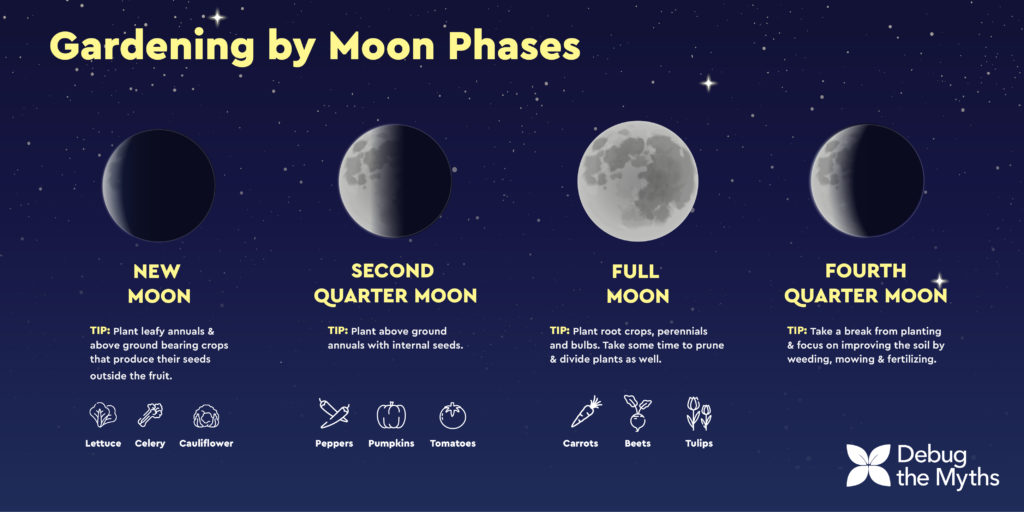Beginning a new garden project can be intimidating, but according to sources like the Farmer’s Almanac, achieving your garden goals can be as easy as looking to the night sky.
Gardening by Moon Phases may be a growing trend, but it has been used by farmers and gardeners for hundreds of years to produce larger healthier harvests.
Here’s how it works: Just like the rise and fall of tides, the moon’s gravitational pull influences moisture in the soil and how seeds absorb water and grow.
- New Moon: During the new moon, lunar gravity is pulling moisture up causing seeds to absorb more water and burst open. Paired with increased moonlight, this creates the perfect conditions for balanced stem and leaf growth. Plant leafy annuals during the new moon like lettuce, spinach, cabbage, celery, cauliflower and kale.
- Second Quarter Moon: Gravitational pull will decrease during the second quarter moon, but with more moonlight, leaves and stems will thrive. Plant above ground annuals with internal seeds such as beans, melons, peppers, pumpkins and tomatoes. Pro tip: Plant 2-3 days before the full moon for peak moisture and watch your fruits flourish.
- Full Moon: Lunar gravity is high during the full moon resulting in an increase in soil moisture. Moonlight is also decreasing making it the perfect time to plant root crops like potatoes, carrots, beets and bulb perennials like tulips and daffodils. Take some time to prune and divide plants during the full moon, as well.
- Fourth Quarter Moon: The fourth quarter moon is your chance to take a break from planting and focus on improving the soil. This should consist of weeding, mulching, fertilizing and harvesting your plants as well as mowing and watering.
Now it’s your turn! Use the Moon Gardening chart below to stay on track. And, for the best results, use an Integrated Pest Management approach to keep pests from invading your new garden.


